M1 Garand rifle
The M1 Garand was the standard U.S. service rifle during the Second World War and the Korean War and saw limited use during the Vietnam War. Named for its Canadian-born designer John Garand, the weapon was the first standard-issue semi-automatic military rifle; replacing the bolt-action M1903 Springfield rifle.
The .30 caliber gas-operated rifle weighs around 9.5 pounds and is just over a metre long. It has an eight-round clip which ejects from the rifle when empty, creating a distinctive metallic “pinging” sound.
Roughly 5.4 million of these rifles were made during the Second World War and were used by all branches of the United States military.

[M1 Garand rifle – Wikipedia]
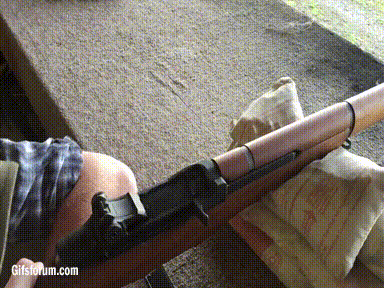
[An empty clip is ejected from an M1 Garand rifle]
M1 Carbine rifle
Often mistaken for a shorter version of the M1 Garand, the M1 Carbine is in fact a completely different weapon, firing a less-powerful type of ammunition.
The weapon weighs about half as much as the M1 Garand and its clips hold 15 to 30 rounds. It was used mainly by soldiers whose role prevented them from using a full-sized rifle, such as paratroopers or soldiers navigating the dense vegetation of the Pacific theatre.

[M1 Carbine rifle – Wikipedia]
MP40 submachine gun
The Maschinepistole 40 (MP 40) was the submachine gun of choice for Axis powers during the Second World War.
Developed by Heinrich Vollmer in 1938, the gun was used by Axis paratroopers and infantrymen as well as platoon and squad leaders. An estimated 1.1 million were produced during the war.
The MP40 is fully automatic, firing at a rate of 500-550 rounds per minute. It features a 32-round magazine and fires 9x19mm cartridges.

[MP-40 submachine gun — Wikipedia]
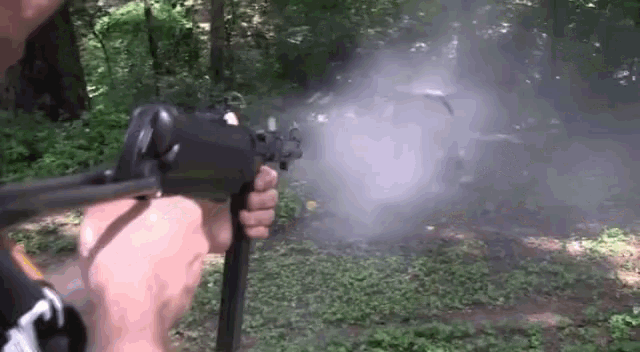
[An MP-40 submachine gun being fired — hickok45]
Mk 2 grenade
The Mk 2 fragmentation grenade was the successor to the failed Mk 1 used in the First World War. The casing for the grenade is cast iron with a grooved surface of 40 knobs divided into five rows and eight columns. The design was meant to increase grip and fragmentation but also gave the weapon a unique look, leading to the nickname “pineapple grenade”.
The grenade has a timed fuse with a four-to-five-second delay. It, also came in a high-explosive variant.
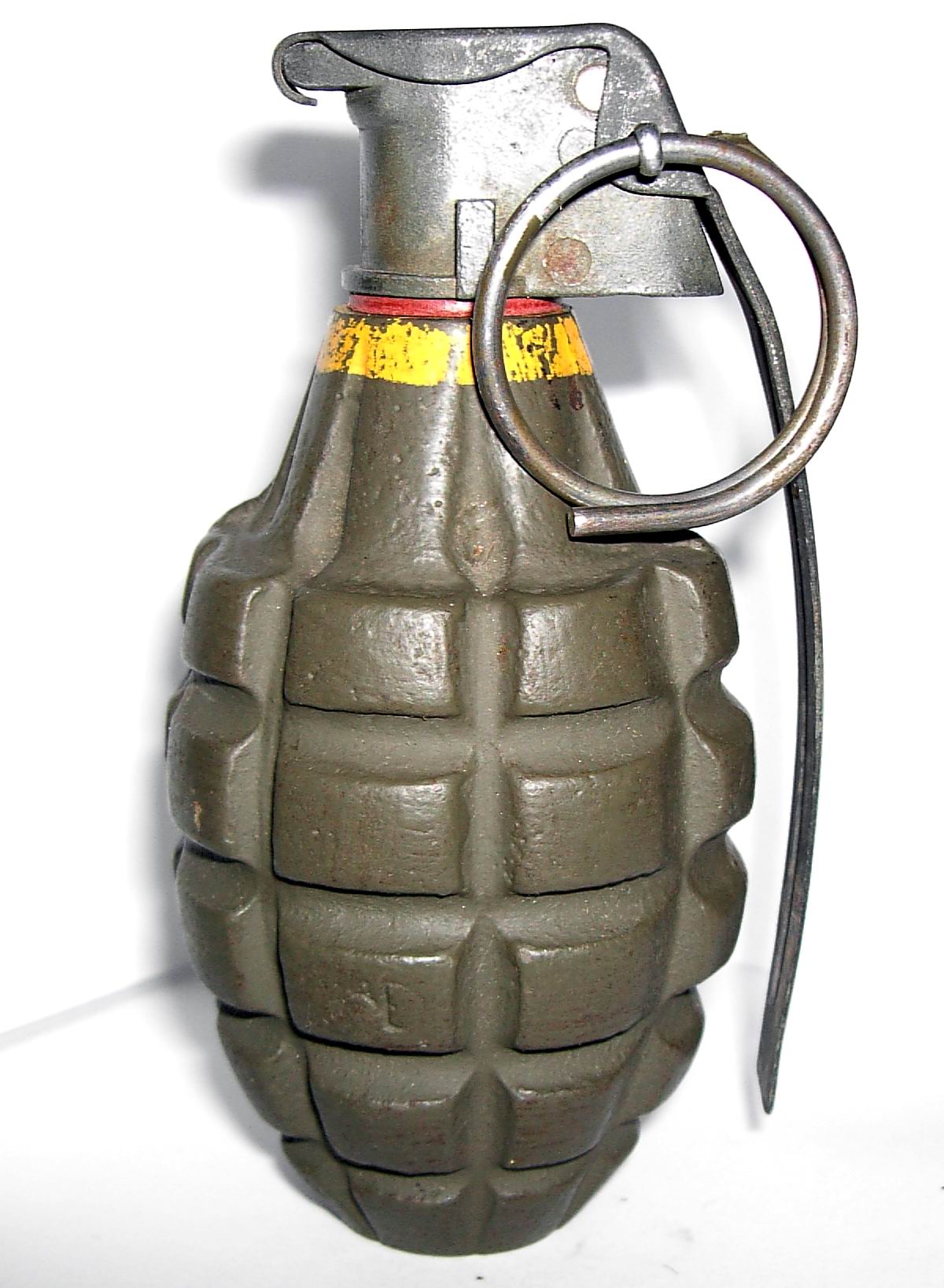
[Mk 2 grenade — Wikipedia]
Stielhandgranate grenade
German for “stalk hand grenade,” this hand grenade used in both the first and second world wars.
It has a friction igniter system rather than the percussion cap system that was common in other grenades. The hollow wooden handle allows the pull cord to pass through and increases the distance the weapon can be thrown.
The Stielhandgranate offered less fragmentation in favour of a more powerful explosion. Two variants were developed, with one allowing the weapon to operate more effectively in the cold and the other a smoke grenade.
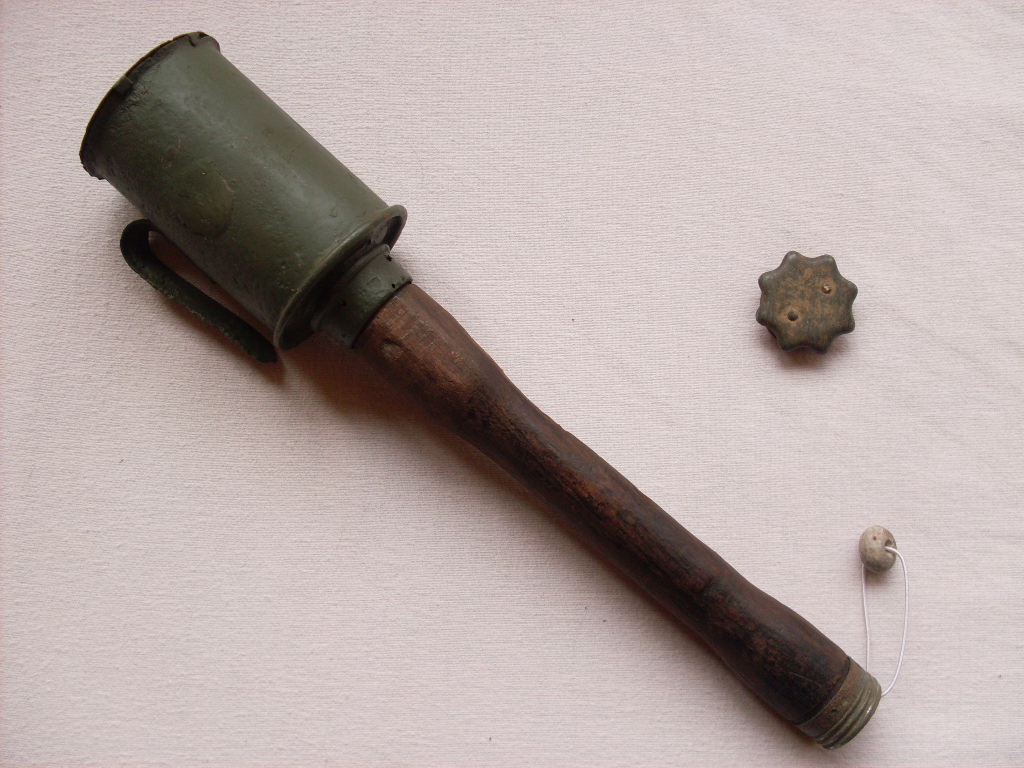
[Steilhandgranate grenade — Wikipedia]
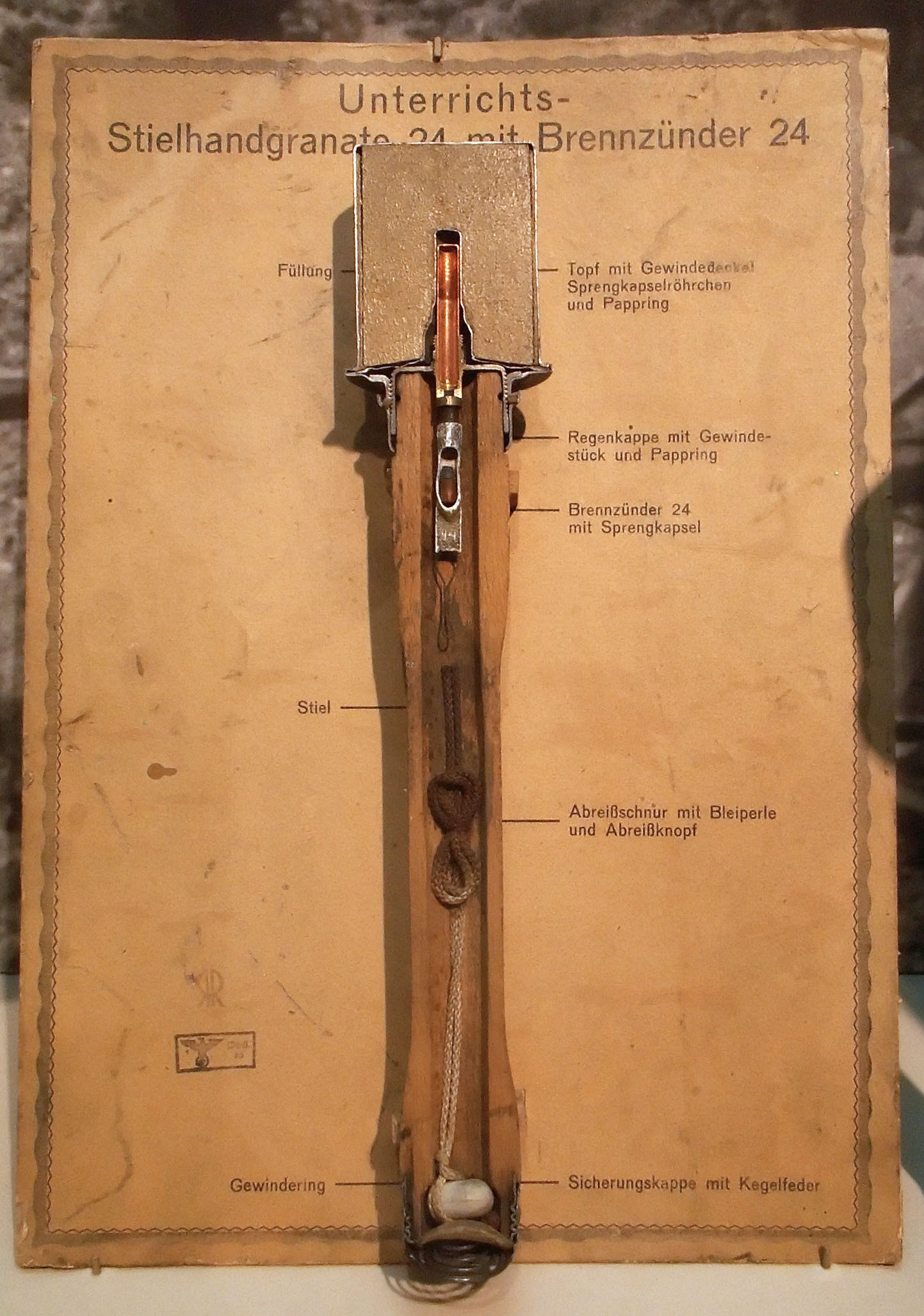
[Cross section of a Steilhandgranate grenade — Wikipedia]
Luger pistol
The Pistole Parabellum, or Luger, was one of the first semi-automatic handguns. It weighs just under one kilogram and commonly fires 7.65x21mm cartridges housed in an 8-round box magazine or 32-round drum magazine.
Used by German forces during both world wars, the firearm was prized by Allied soldiers as a war trophy. This led to its use as bait to lure Allied soldiers into triggering a landmine or other booby trap when the gun was disturbed.
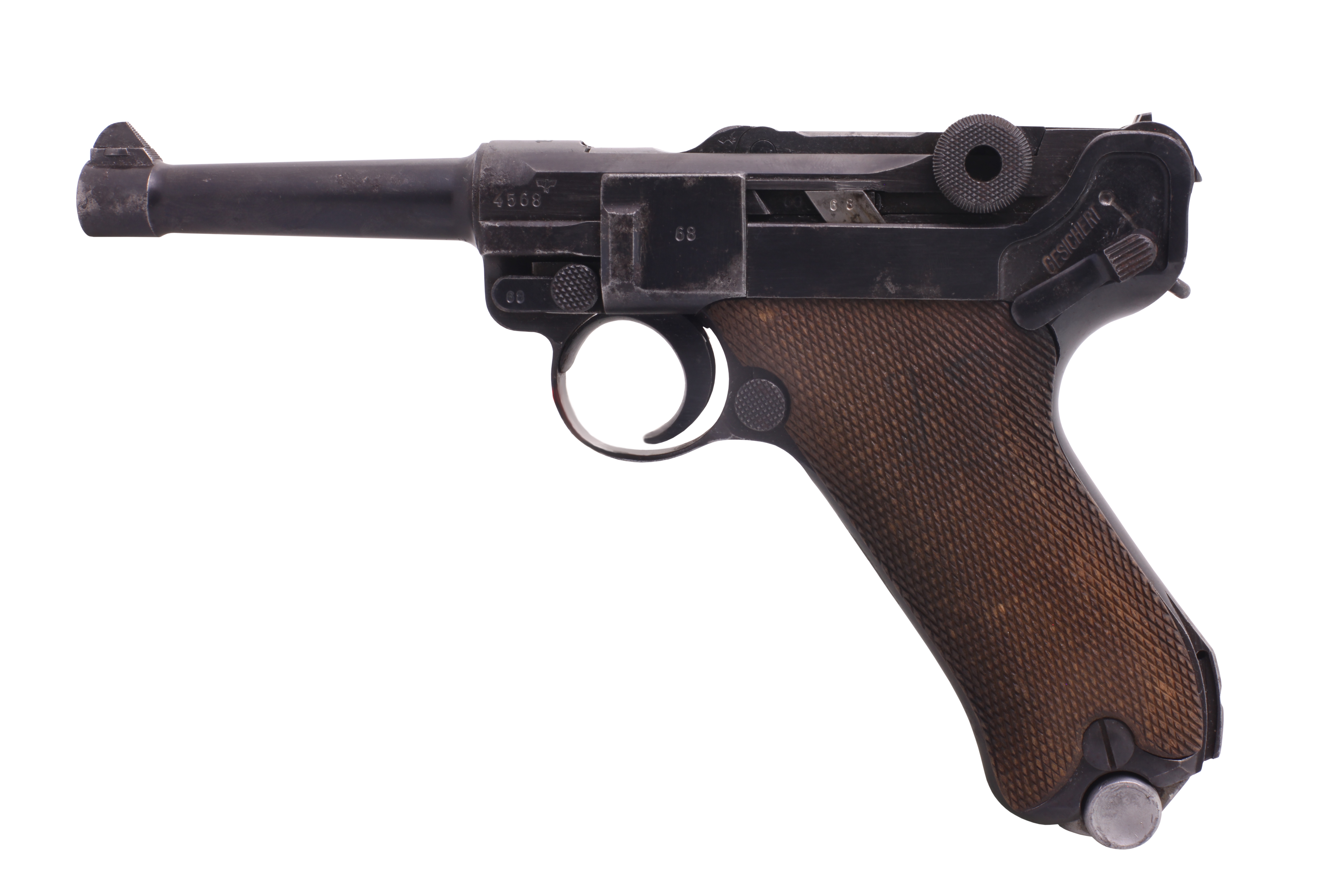
[Luger pistol — Wikipedia]
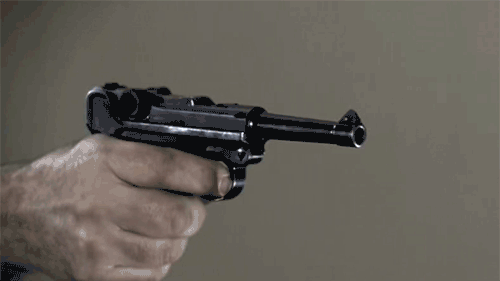
M1911 handgun
The standard U.S. service pistol from the First World War to the Vietnam War, the M1911 and its A1 variant use a 7-round box magazine with .45 ACP cartridges.
The A1 changed the design of the gun to provide greater accuracy and reduce pinching of the skin of the user (a common problem with the original version).
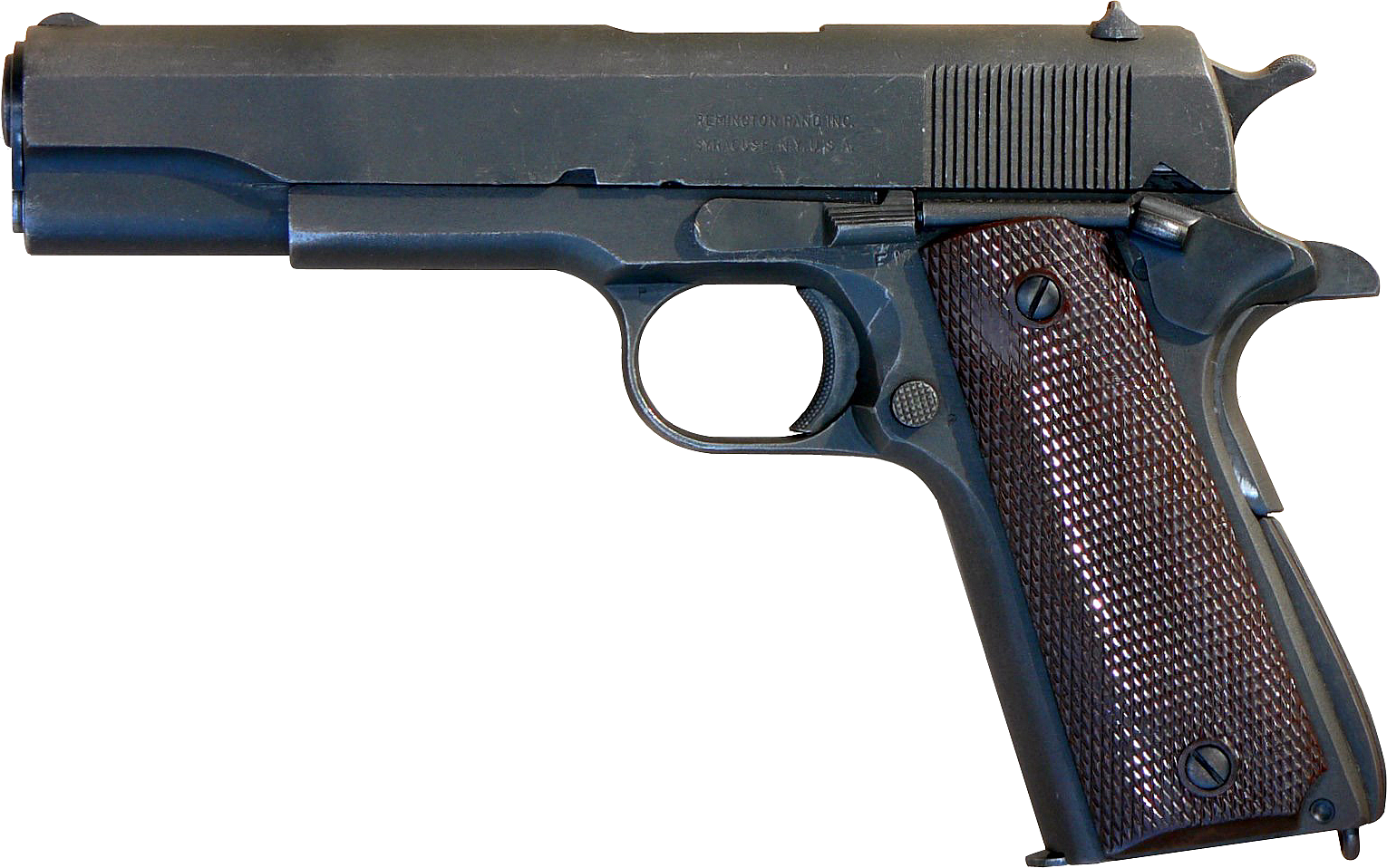
Lee-Enfield rifle
A staple of the Canadian military, variations of the Lee-Enfield have have been used by Canadian soldiers dating back to the Boer War.
This bolt-action rifle is a redesign of the Lee-Metford rifle used by the British army in the late 19th century and early 20th century. It uses .303 British cartridges with a 10-round magazine feed system. The weapon has a maximum firing range of just under 3 kilometres making it useful as a primary infantry rifle and, with some adjustments, a sniper rifle.
The Lee-Enfield was also used in Australia, New Zealand, South Africa and India.
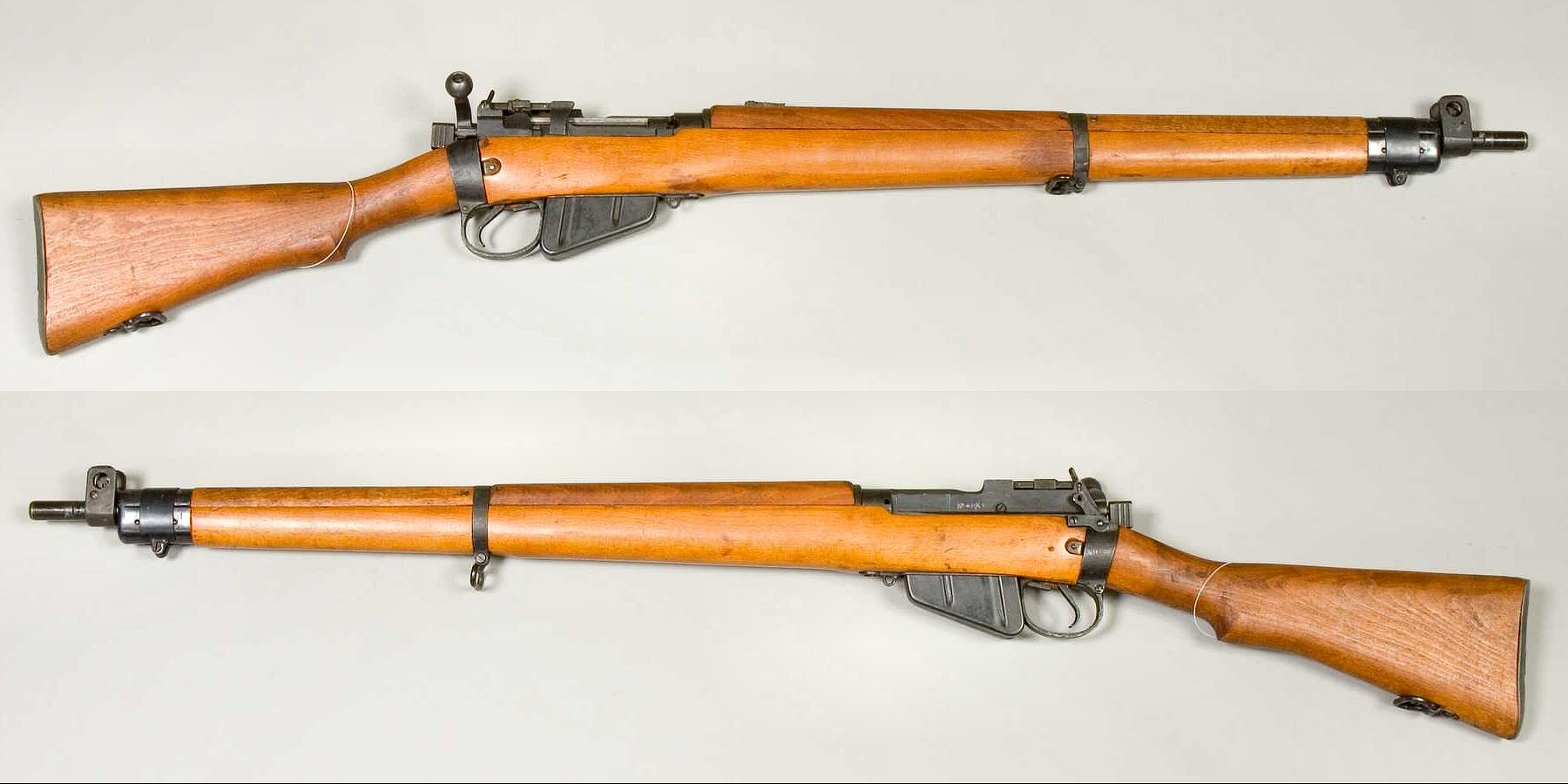
Ka-Bar combat knife
Standard issue for American soldiers in the Second World War, the Ka-Bar combat knife replaced the U.S. Mark I trench knife issued in the First World War.
The main complaints with the older trench knife were that the brass finger guard on the handle limited the range of fighting grip positions and the thin blade often broke when used for non-combat utility purposes.
The Ka-Bar was designed as a dual-purpose knife that, in addition to combat can be used for opening cans, digging trenches and cutting cables and brush. The Ka-Bar is so effective as a service weapon that it remains in use by U.S. forces.
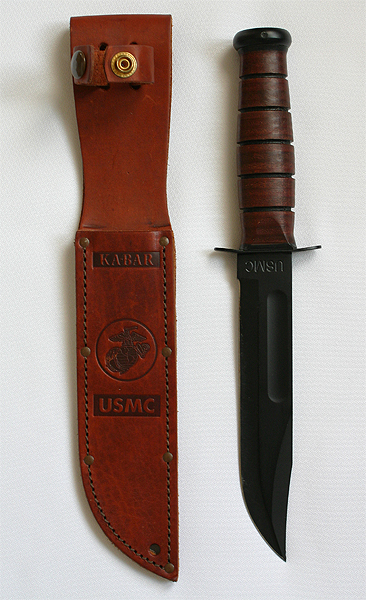
Thompson submachine gun
Popularized by gangsters during the Prohibition era, the Thompson submachine gun was used by Allied soldiers in the Second World War.
The weapon weighs just under 5 kilograms, and fires .45 ACP cartridges. Magazines range from 10 and 20-round clips to the iconic 50 and 100-round drum magazines.
The Thompson submachine gun’s fast rate of fire helped the gun earn a number of nicknames including “Annihilator,” “Chicago Typewriter,” “Chicago Organ Grinder,” “Trench Broom,” “Trench Sweeper” and “Tommy gun.”
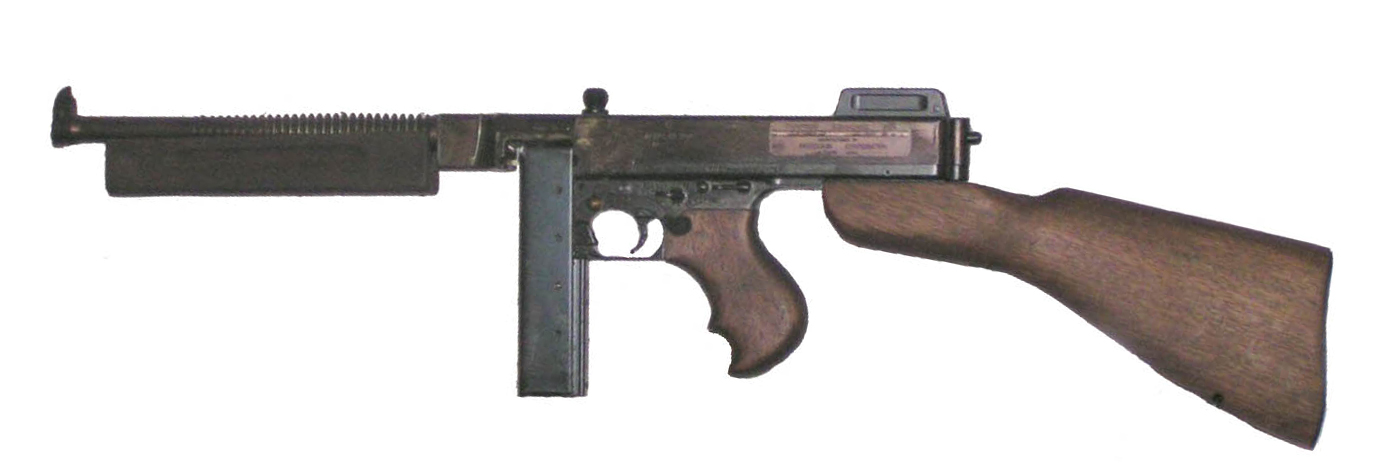
M1 and M1A1 flamethrower
Arguably one of the most terrifying weapons of the Second World War is the M1 flamethrower and its M1A1 variant.
The M1 and M1A1 were used primarily in the Pacific theatre for attacking pillboxes and other fortifications. It also saw use in Europe, most notably during the D-Day assault, where 150 were issued.
The weapons consists of two fuel tanks and a smaller propellent tank carried on the back of the user. A battery creates a spark and ignites a hydrogen igniter. Pressurized fuel (oil in the M1 and napalm in the M1A1) then spews from the weapons nozzle, up to 43 metres in front of the user.
This 32-kilogram weapon was extremely cumbersome and exposed the user to enemy fire.

Advertisement





















